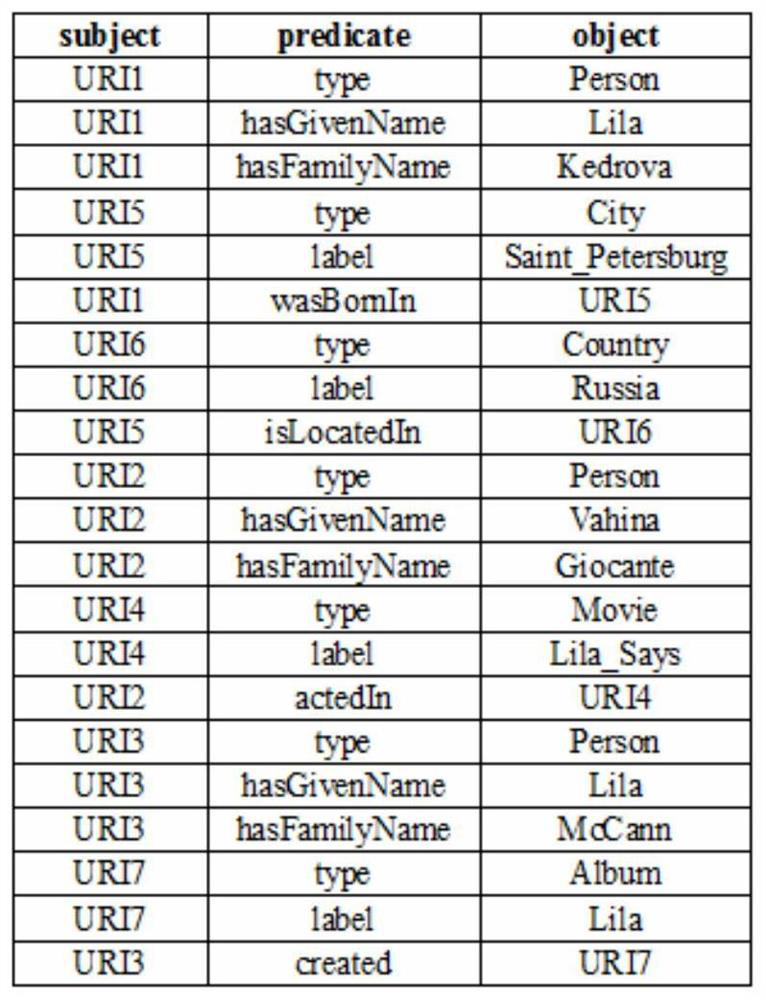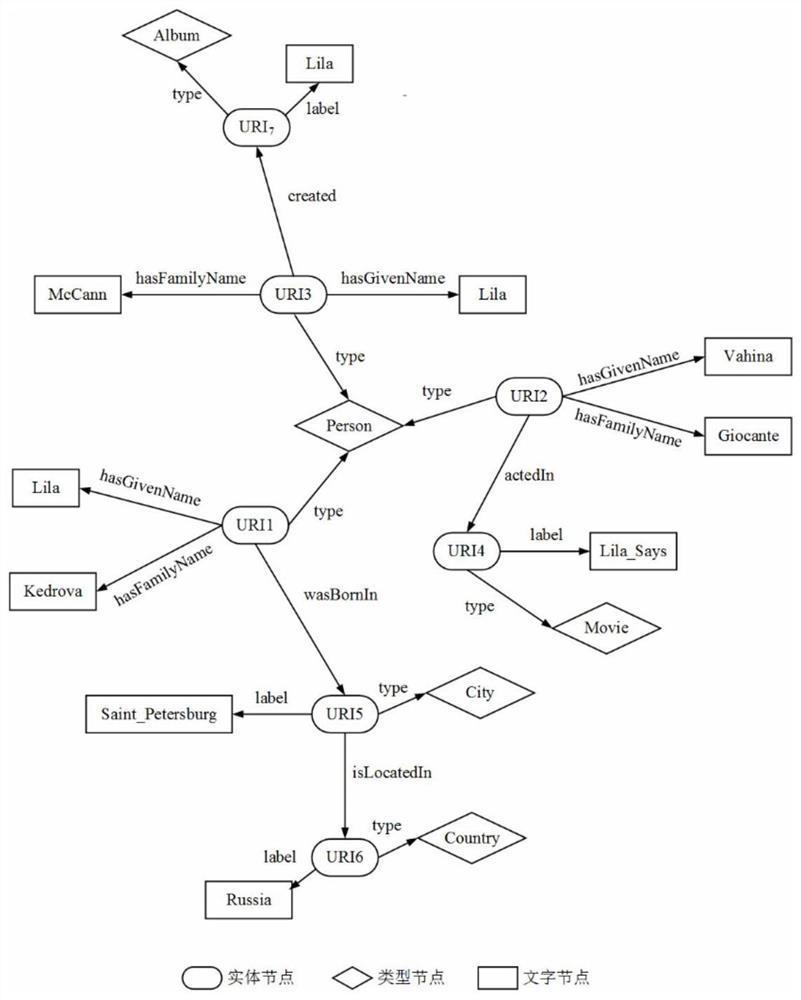A method for automatically generating sparql query statements based on keyword context
A query statement, automatically generated technology, applied in the database field
- Summary
- Abstract
- Description
- Claims
- Application Information
AI Technical Summary
Problems solved by technology
Method used
Image
Examples
Embodiment Construction
[0055] The processing flow of the inventive method is as figure 1 shown.
[0056] Introduce the specific implementation of the inventive method below in conjunction with embodiment, as figure 2 Shown is the RDF data of the example. The input keywords are person, movie and Lila, which are used to query the characters who starred in the movie "LilaLila". The SPARQL statement generated by the SPARQL query statement automatic generation method is as follows: Figure 7 shown. Introduce the concrete steps of the inventive method below in conjunction with embodiment:
[0057] Step 1: RDF tagged graph schema summary processing.
[0058] Firstly, the RDF data is formalized and defined as a tag graph, which is represented by triple G=(V, L, E), where V is a vertex set, representing the collection of all entity nodes, type nodes and text nodes in the data; L is the label set on the edge, which represents the label set of the edge between the entity nodes and the label set of the ed...
PUM
 Login to View More
Login to View More Abstract
Description
Claims
Application Information
 Login to View More
Login to View More - R&D
- Intellectual Property
- Life Sciences
- Materials
- Tech Scout
- Unparalleled Data Quality
- Higher Quality Content
- 60% Fewer Hallucinations
Browse by: Latest US Patents, China's latest patents, Technical Efficacy Thesaurus, Application Domain, Technology Topic, Popular Technical Reports.
© 2025 PatSnap. All rights reserved.Legal|Privacy policy|Modern Slavery Act Transparency Statement|Sitemap|About US| Contact US: help@patsnap.com



